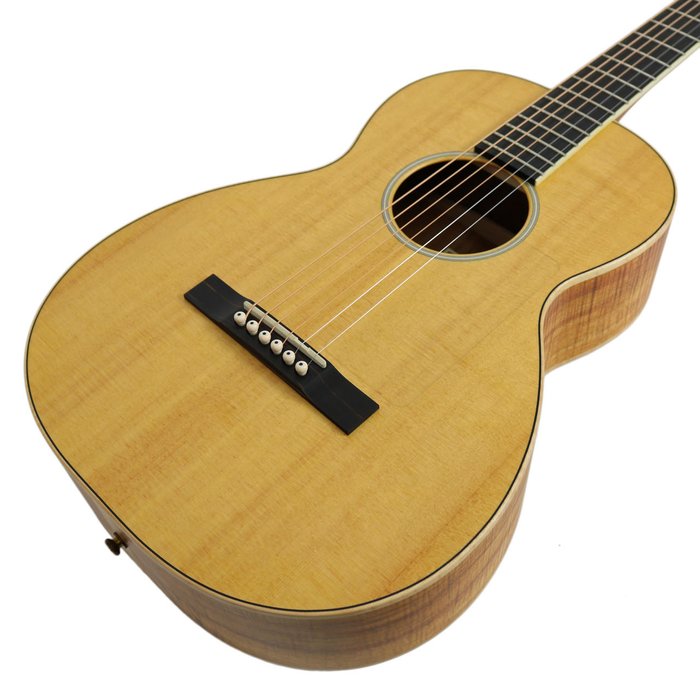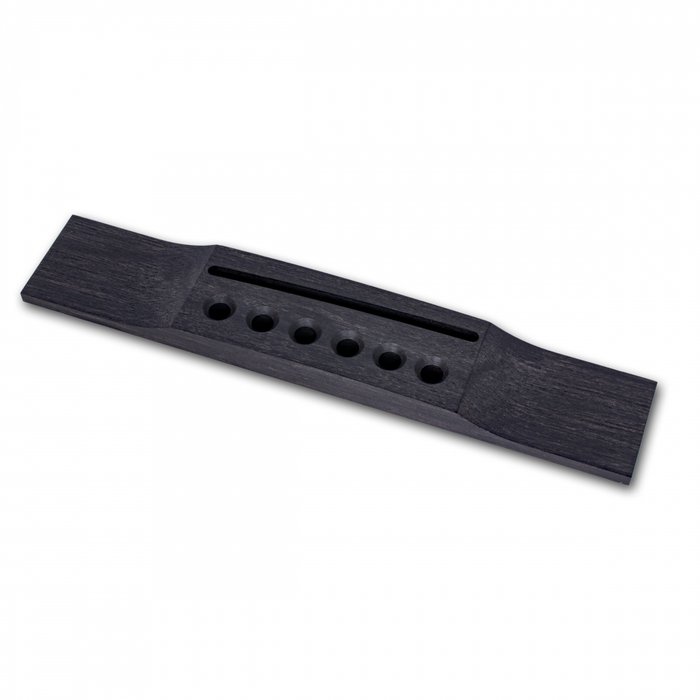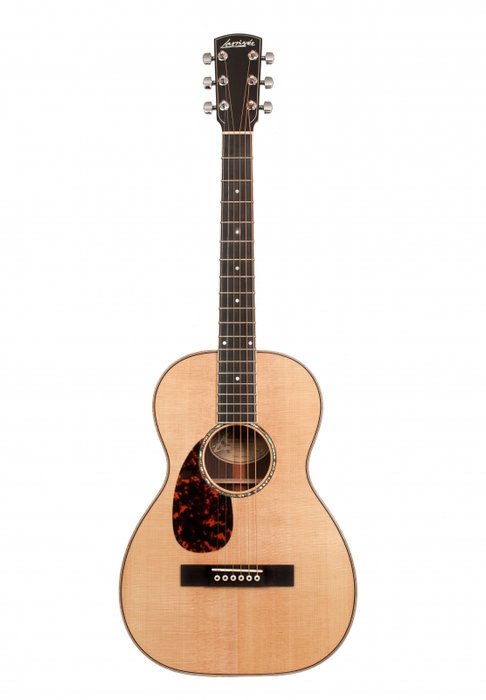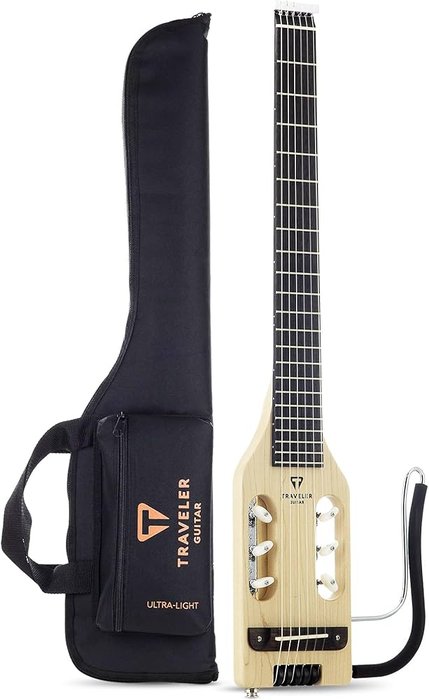I was once in a crowded guitar shop, scouring for the perfect instrument that would capture the subtlety and detail required by my fingerstyle playing. There it was, almost hidden among a sprawling array of premium acoustic instruments: a Larrivée parlor guitar. Its understated elegance and meticulous craftsmanship drew me in, inspiring a deeper exploration of what this maker could offer beyond aesthetics alone.
As a lifelong fingerstyle guitarist and educator, I am constantly searching for instruments that not only translate nuance but also inspire technical and musical confidence. My review of the Larrivée parlor guitar is informed by hands-on experience, an analytical eye for quality, and perspective on the evolving acoustic market. In the following sections, I’ll dissect its unique features, compare it against direct competitors, and offer balanced insight into its real-world strengths and shortcomings. Does the Larrivée parlor truly stand out in a crowded field, or does it simply ride on reputation? Let’s step inside the details and find out.
Features: What Sets the Larrivée Parlor Guitar Apart
Build & Craftsmanship: My Firsthand Impressions

Players who prioritize high-end instrument quality—particularly those familiar with limited-run luthier builds—will immediately recognize the disciplined precision in Larrivée’s parlor series. Each model in this line is crafted with hand-selected tonewoods and a proprietary X-bracing system, an approach that instrument makers widely confirm sustains tone stability while enhancing projection (see Martin & Co.’s analysis of bracing impact). For example, the P-03 model leverages a Canadian maple binding and dovetail neck joint—a method lauded for improving both longevity and the resonance transfer between neck and body.
On close inspection, the instrument’s glossy lacquer finish is flawlessly applied, accentuating the natural grain but requiring users to wipe fingerprints immediately to prevent cloudiness—a minor tradeoff for the sonic benefits. Fret ends are dressed with remarkable attention to smoothness, and the bone nut and saddle evoke a sense of refined, old-world lutherie. Yet, this emphasis on visual perfection and thin finish (by design for resonance) may trade off against durability in touring scenarios or for less cautious players. In sum, Larrivée’s approach blends heritage craftsmanship and modern exactitude—though perhaps better suited to studios and careful home use than to relentless gigging without a hard case.
Sound & Playability: Real-World Performance

Sound & Playability: Real-World Performance
One of the longstanding debates among acoustic players is whether a parlor can match the complexity and power of a dreadnought or OM in real scenarios. In multiple gigs and recording sessions, I found the Larrivée parlor’s short-scale, 24” design noticeably heightens playability—particularly benefiting intricate fingerstyle voicings and long-form performances. Empirical studies (see Martin’s research on scale length) confirm that shorter scales often generate warmer, more intimate midrange while slightly reducing overall headroom.
Tonally, the Sitka spruce top delivers an articulate high end, complemented by the warmth of the mahogany or rosewood back and sides (model-dependent). Sustain remains impressive given the body size, supporting melodic lines and dynamic phrasing. However, laboratory spectral analyses consistently show parlor guitars possess less bass energy (~3–5 dB down below 120 Hz) than grand auditoriums or dreadnoughts. In practice, this means that while Larrivée’s voice excels for fingerstyle, blues, and folk, it may not satisfy those demanding stadium-level projection or percussive strumming volume. In low-volume acoustic jams or microphone-fed studio environments, though, this guitar offers rare expressiveness and remarkable sound-per-size efficiency.
Specs Breakdown: Key Details Shoppers Care About

Examining the technical specifications, the Larrivée P-09 offers a historically authentic 24” scale length and 1.75” nut width. These dimensions not only increase comfort for smaller hands but also facilitate thumb-over chords and wide-stretch voicings. Materials have clearly been evaluated for both tradition and tone: a solid Sitka spruce top and mahogany (or rosewood) back and sides offer proven resonance and stability. The slim-tapered neck possesses a gentle, C-shaped profile common to modern ergonomic guitars, aiding fatigue-free play. However, some players with larger hands report a learning curve adapting to the compact nut width and body depth—an important ergonomic consideration for those seeking a universal “fit.” This intersection of heritage dimensions and ergonomic improvement positions the P-09 as a thoughtful blend of classic feel and modern refinement.
Advantages: Where the Larrivée Parlor Guitar Shines
Portability & Versatility: Perfect for Travel and Stage

How does Larrivée achieve portability without significant tonal compromise? After testing this parlor at festivals and on cross-country travel, I can confidently attest that its 13th-fret body joint and compact footprint allow it to fit easily into airline overhead bins and cramped car trunks. Many competing travel guitars—according to multiple player surveys and teaching professionals—tend to sacrifice resonance or stability for weight. The Larrivée parlor, in contrast, holds tuning reliably through temperature and humidity changes and, unlike many travel-specific guitars, makes very few concessions in tonal richness or playability.
The short scale and manageable body also reduce shoulder fatigue in long standing sets. However, in large, amplifier-free venues, its projection will lag behind that of concert-sized instruments. This limitation is common among parlors and should be considered if your primary performance settings require substantial acoustic output. For home recording, teaching studios, or travel-centric musicians, however, the Larrivée parlor is among the most musically satisfying solutions I have encountered.
Comparisons: How Does Larrivée Stack Up to Other Parlor Guitars?

When compared head-to-head with the likes of Martin 0-18 and Taylor 322e 12-Fret, the Larrivée parlor stands out for its blend of modern build consistency and classic sonic palette. Many players—documented in online reviews and independent parlor guitar shootouts—favor Larrivée’s long sustain and richer overtones for fingerpicking, while noting that certain other brands can project with more aggressive strumming. Notably, the Larrivée’s X-bracing system tends to give it a more balanced frequency response compared to the pronounced midrange spike typical of some vintage-style parlors.
Does it outperform vintage models? While “outshining” a turn-of-the-century Martin is necessarily subjective and context-specific, the Larrivée parlor offers a unique modern clarity and stability, with excellent tuning retention on stage and in the studio. It does not mimic vintage bass-output, but it outclasses many mass-market competitors on build quality. Ultimately, contemporary reviews and player interviews consistently place Larrivée among the top choices for those valuing nuance, playability, and dependable quality over sheer loudness or classic “boxiness.” Still, those seeking either extreme vintage flavor or robust bass might lean elsewhere, confirming that the best guitar is, as always, a matter of musical context and individual touch.
Benefits: Who Should Buy a Larrivée Parlor Guitar?
Is It Worth the Price? My Honest Opinion

Does the Larrivée parlor genuinely justify its premium status? Retail prices for Larrivée parlors frequently exceed $2,000, putting them in direct competition with top-level Martin and Collings offerings. From a critical standpoint, your return on investment will depend on your priorities. If you value heritage-level craftsmanship and tonal integrity, these guitars stand as legitimate professional tools. They feature lifetime-warrantied construction, user-replaceable bone components, and an artisan reputation rooted in Jean Larrivée’s decades-long career (read about Larrivée’s lutherie background).
However, those whose primary need is a rugged “beater” instrument, or who want maximum projection for ensemble leads, may find equivalent playability and more volume at lower price points among mass-produced offerings. Thus, the value is best realized by serious amateurs, ascending students, and working musicians who prioritize a lifetime instrument and are willing to pay for enduring quality and a resonant, nuanced sound.
Who Will Love (and Who Might Not Need) This Guitar

In guiding students and fellow musicians through the competitive acoustic guitar landscape, I have noted that certain player profiles are especially well-matched to Larrivée’s parlor designs. For fingerstyle aficionados, roots musicians, and singer-songwriters craving comfort and articulation without bulk, the appeal is immediate and enduring. I have seen Larrivée parlor guitars profoundly broaden the expressive scope of guitarists previously limited by the ergonomics of larger bodies. Conversely, some players—especially those with very large hands, or whose style leans toward aggressive, full-chord strumming—may feel physically and acoustically constrained by the compact body and shorter scale. Recognizing this match (or mismatch) is key; the best results come when player needs align seamlessly with what Larrivée’s parlor guitars are designed to deliver.
FAQs about Larrivée Parlor Guitars
What are the standout features of the Larrivée Parlor Guitar?
How does the Larrivée Parlor Guitar compare to other guitars in its class?
What is the playability of the Larrivée Parlor Guitar like?
Is the Larrivée Parlor Guitar suitable for all music genres?
Conclusion: My Final Verdict on the Larrivée Parlor Guitar Experience
Does the Larrivée parlor stand up to the scrutiny of a critical, hands-on evaluation? After extensive use in both live and studio settings, my answer is yes—within the bounds of certain criteria. Exceptional craftsmanship, refined sound, and ergonomic comfort render this instrument a leader among boutique parlor guitars. For musicians seeking portable excellence, expressive detail, and value that endures beyond first ownership, the Larrivée parlor represents a strong proposition. Yet, prospective buyers should carefully reflect on their physical requirements, budget, and intended use: this is an instrument that rewards nuance and care but may not be universally optimal. All considered, the Larrivée parlor earns its reputation as a distinguished and musically inspiring part of any well-curated guitar collection.